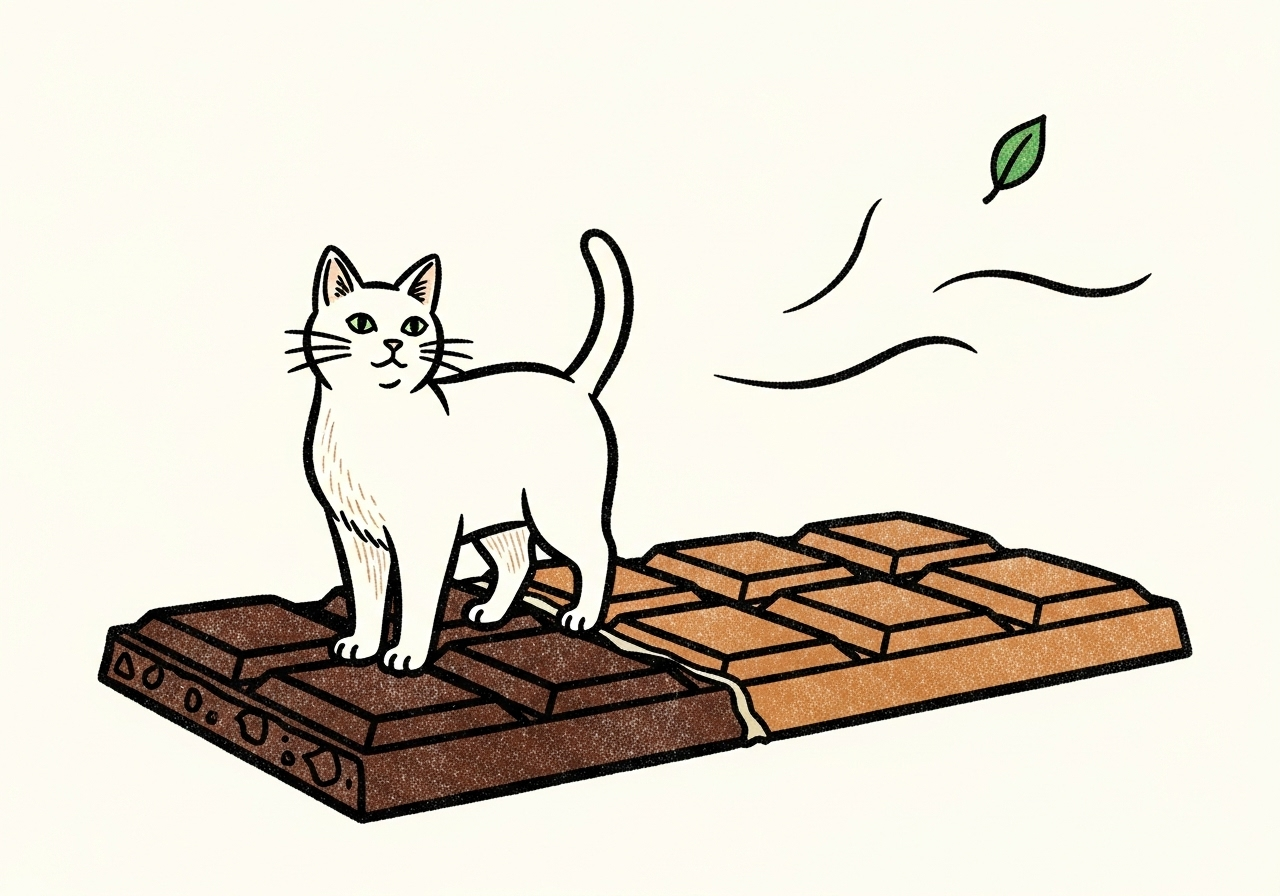Can cats eat chocolate?

A direct and urgent answer: No, cats can never eat chocolate. This article explains the toxic compounds in chocolate, the severe symptoms of poisoning, and the critical emergency steps every cat owner must know. Learn to identify the danger levels in different types of chocolate and how to keep your pet safe.
Can Cats Eat Chocolate? An Urgent Warning for All Cat Owners
Let's be unequivocally clear from the start: Under no circumstances should a cat ever eat chocolate. Unlike some human foods that fall into a grey area of safety, chocolate is highly toxic to felines and can lead to a serious medical emergency, and in some cases, can be fatal. While most cats are not naturally drawn to the sweet taste of chocolate, their curiosity can lead them to take a dangerous nibble. As a responsible pet owner, understanding why chocolate is so hazardous and knowing what to do in an emergency is critical.
The Toxic Twins: Theobromine and Caffeine
The primary dangers in chocolate come from two related chemical compounds called methylxanthines:
- Theobromine: This is the main toxic agent for cats. While humans can easily metabolize it, cats process it very slowly, allowing it to build up to toxic levels in their system.
- Caffeine: Present in smaller amounts, caffeine also contributes to the toxic effect.
When ingested by a cat, these substances act as powerful stimulants. They can severely overstimulate the central nervous system and the cardiac muscles, leading to the dangerous symptoms associated with chocolate poisoning.
Danger Levels: Not All Chocolate is Created Equal
The concentration of theobromine and caffeine varies significantly depending on the type of chocolate. The darker and more bitter the chocolate, the more toxic it is to your cat. Here is a general hierarchy from most to least dangerous:
- Dry Cocoa Powder: The most toxic, containing the highest concentration of theobromine.
- Unsweetened Baker's Chocolate: Extremely dangerous and highly concentrated.
- Dark Chocolate & Semi-Sweet Chocolate: Also very high in methylxanthines and poses a significant risk.
- Milk Chocolate: While less concentrated than dark chocolate, it is still very toxic. A small amount can easily poison a cat.
- White Chocolate: Contains only trace amounts of theobromine and caffeine, making the risk of methylxanthine poisoning low. However, it is still very high in fat and sugar, which can cause severe gastrointestinal upset and pancreatitis, so it must also be strictly avoided.
It is crucial to understand that even the 'least dangerous' chocolate is still unsafe and should never be given to a cat.
Symptoms of Chocolate Poisoning in Cats
If you suspect your cat has ingested any amount of chocolate, you must watch for signs of poisoning. Symptoms can appear within 6 to 12 hours and can last for several days due to the slow metabolism of the toxins. Do not wait for symptoms to appear before contacting a vet.
Early or Mild Symptoms:
- Vomiting
- Diarrhea
- Increased thirst and urination
- Restlessness and hyperactivity
Severe and Advanced Symptoms:
- Elevated heart rate (tachycardia)
- Abnormal heart rhythms (arrhythmias)
- Muscle tremors or twitching
- Seizures
- High body temperature (hyperthermia)
- Coma
- Heart failure
EMERGENCY ACTION: What to Do if Your Cat Eats Chocolate
This is a time-sensitive emergency. Acting quickly can save your cat's life.
- Remove the Cat and the Chocolate: Immediately move your cat to a safe space and ensure they cannot eat any more chocolate.
- Gather Information: Try to determine what type of chocolate was eaten (wrapper, packaging) and how much is missing. Note your cat's approximate weight. This information is vital for the veterinarian.
- Call Your Veterinarian or a Pet Poison Helpline Immediately: This is the most important step. Provide them with the information you gathered. They will calculate the potential toxicity level and advise you on the immediate next steps. Do not delay this call.
- DO NOT Induce Vomiting Yourself: Never attempt to make your cat vomit unless you are specifically instructed to do so by a veterinary professional. Doing so improperly can cause serious complications, such as aspiration pneumonia.
Veterinary Treatment and Prevention
Professional veterinary care is the only safe way to treat chocolate poisoning. A vet may induce vomiting to empty the stomach and administer activated charcoal to bind any remaining toxins and prevent them from being absorbed into the bloodstream. In severe cases, your cat may require hospitalization for supportive care, including IV fluids to prevent dehydration and medications to control heart rate, blood pressure, and seizures.
Prevention is the best medicine. Keep all chocolate and cocoa-containing products securely stored in high cupboards or sealed containers where a curious cat cannot reach them. Be especially vigilant during holidays like Easter, Halloween, and Christmas when chocolate is more common in the household.
Conclusion: A Non-Negotiable "No"
The answer to 'Can cats eat chocolate?' is a firm, non-negotiable NO. The risk of severe illness and death is far too high. Protect your feline friend by keeping this dangerous substance out of their reach and providing them with safe, species-appropriate treats designed for cats.


